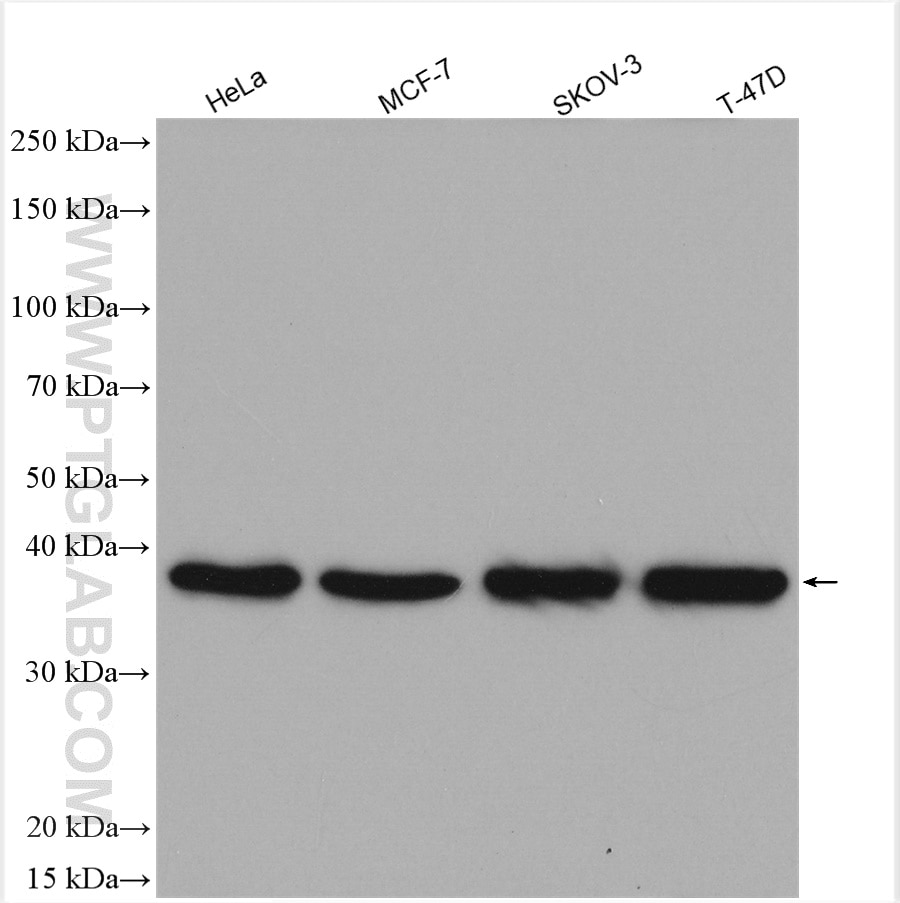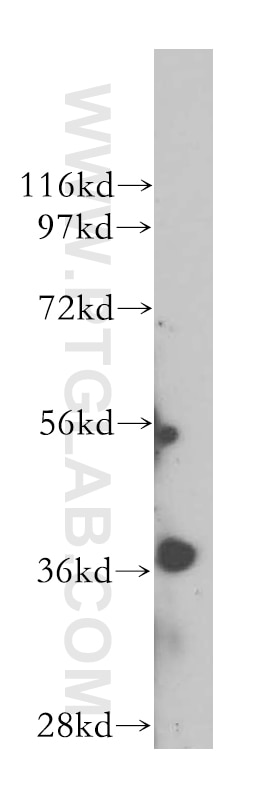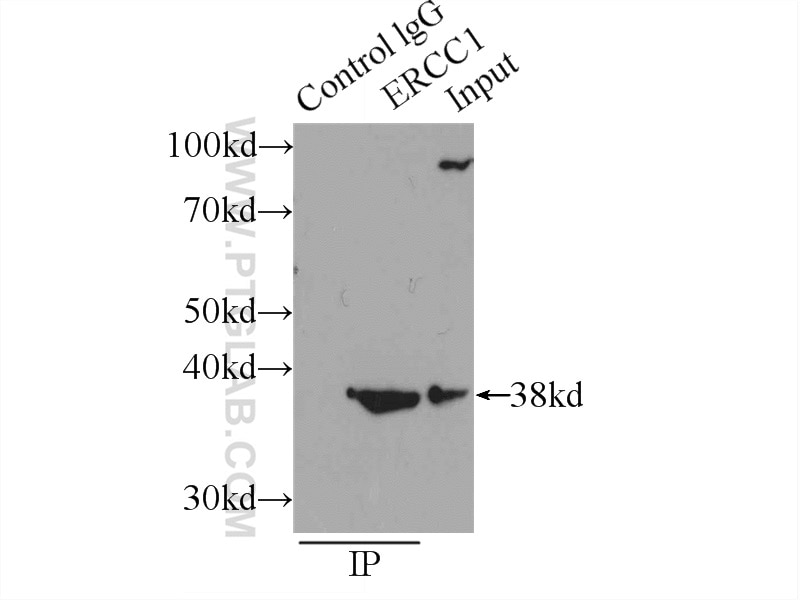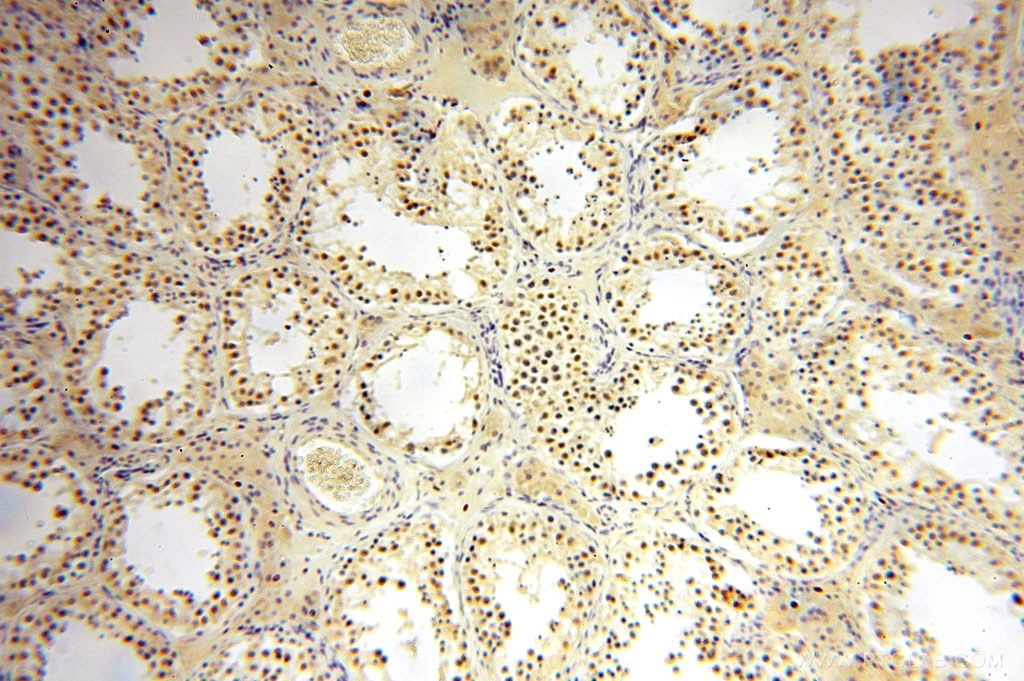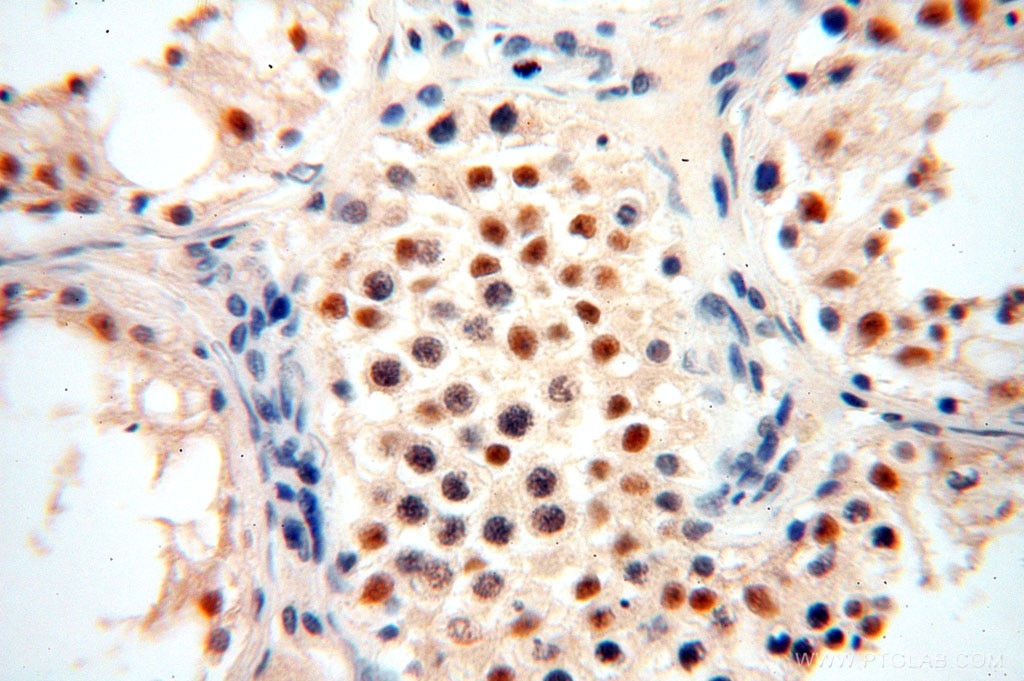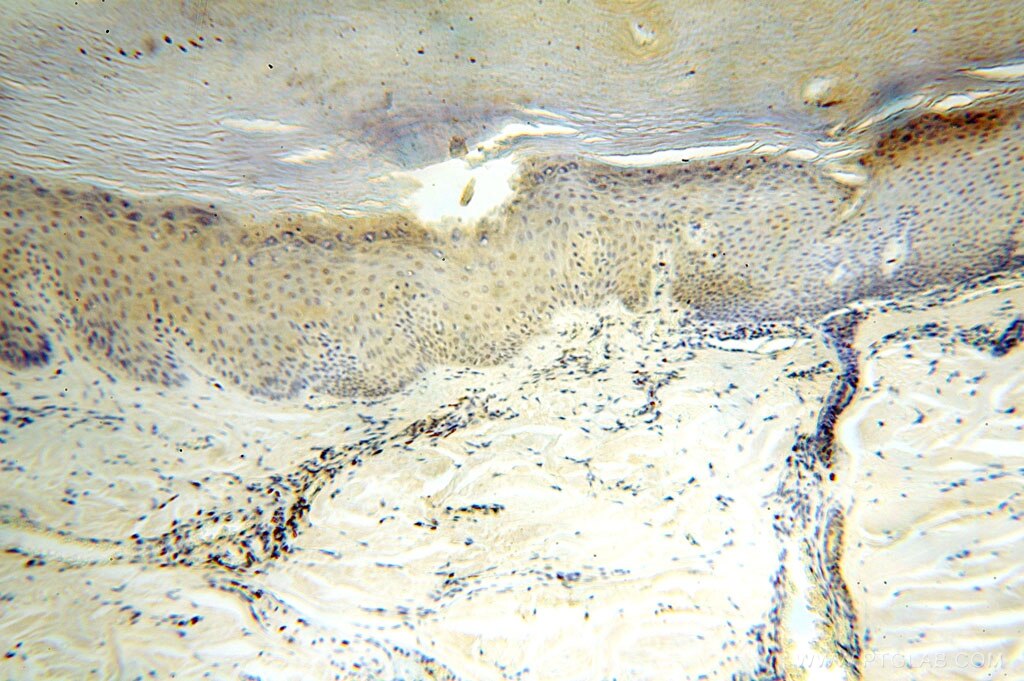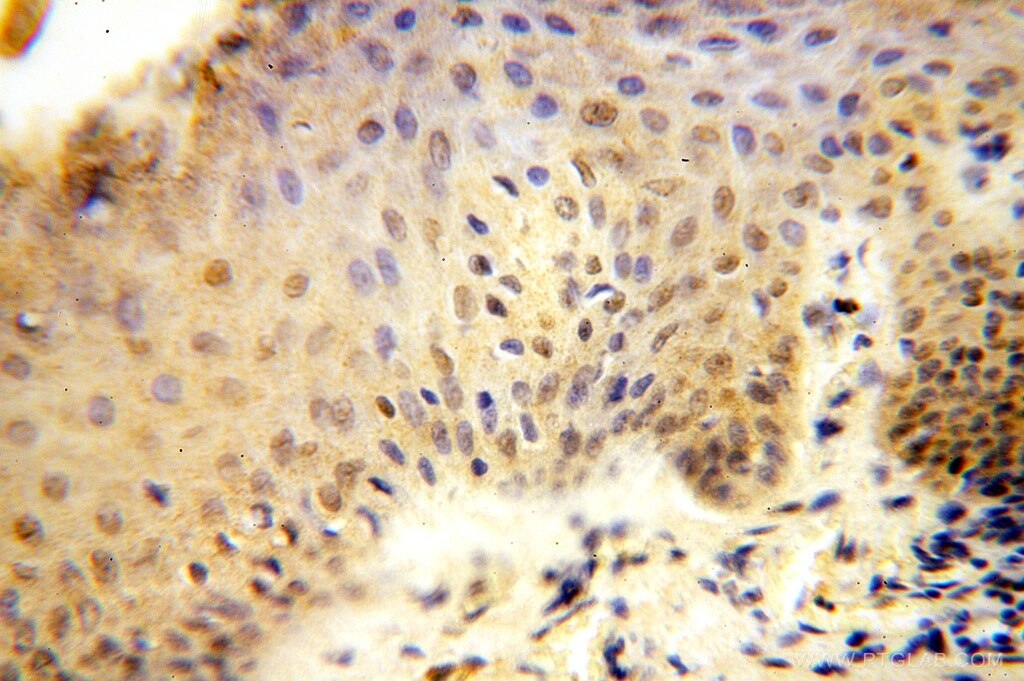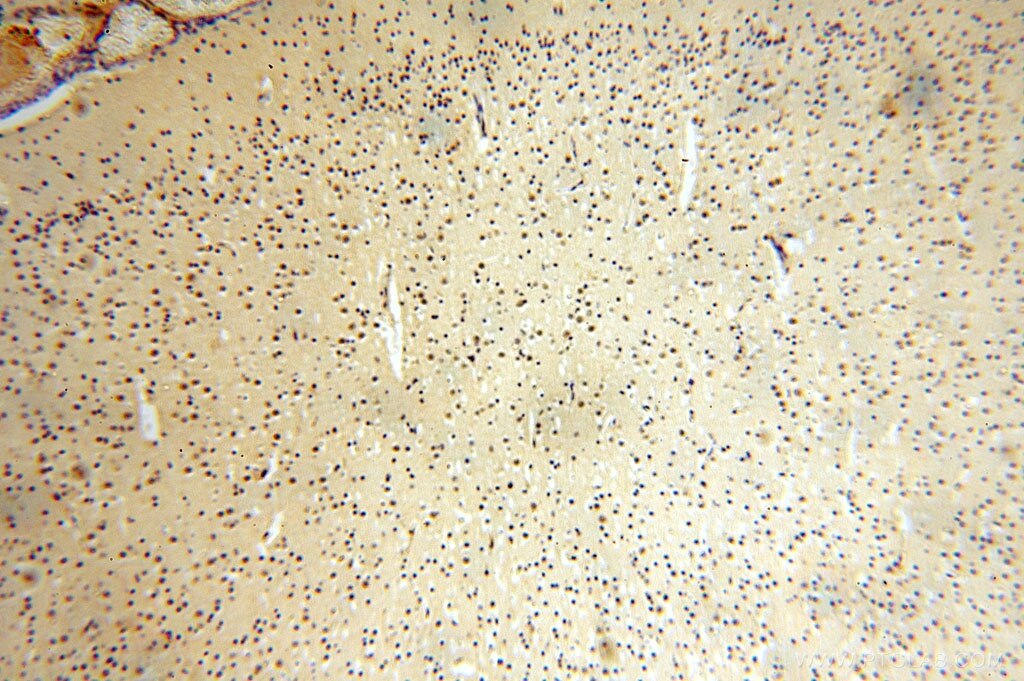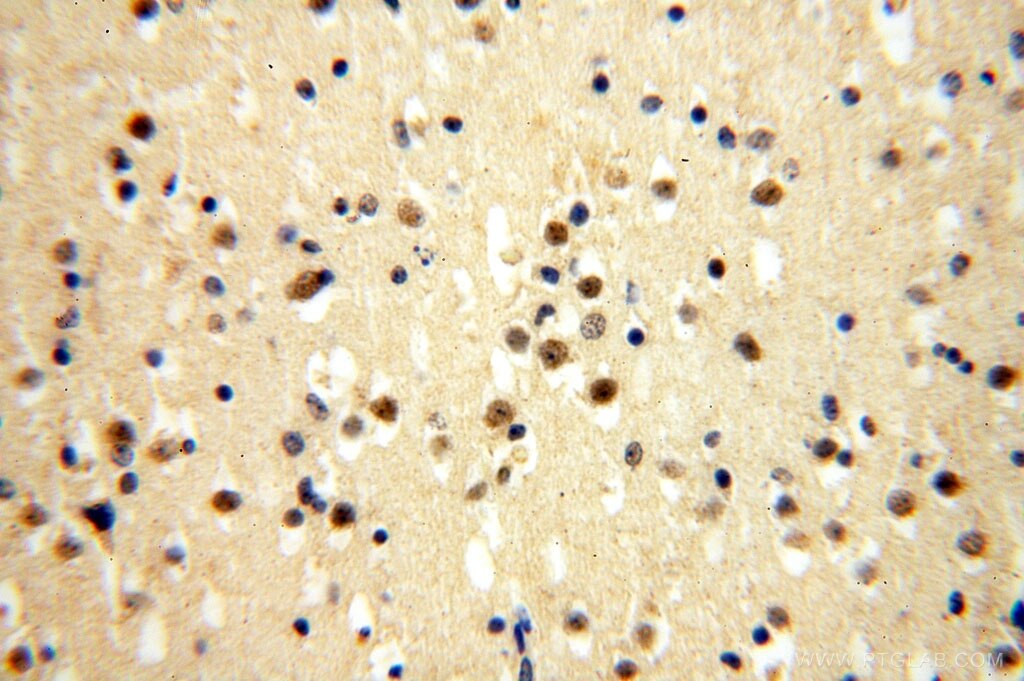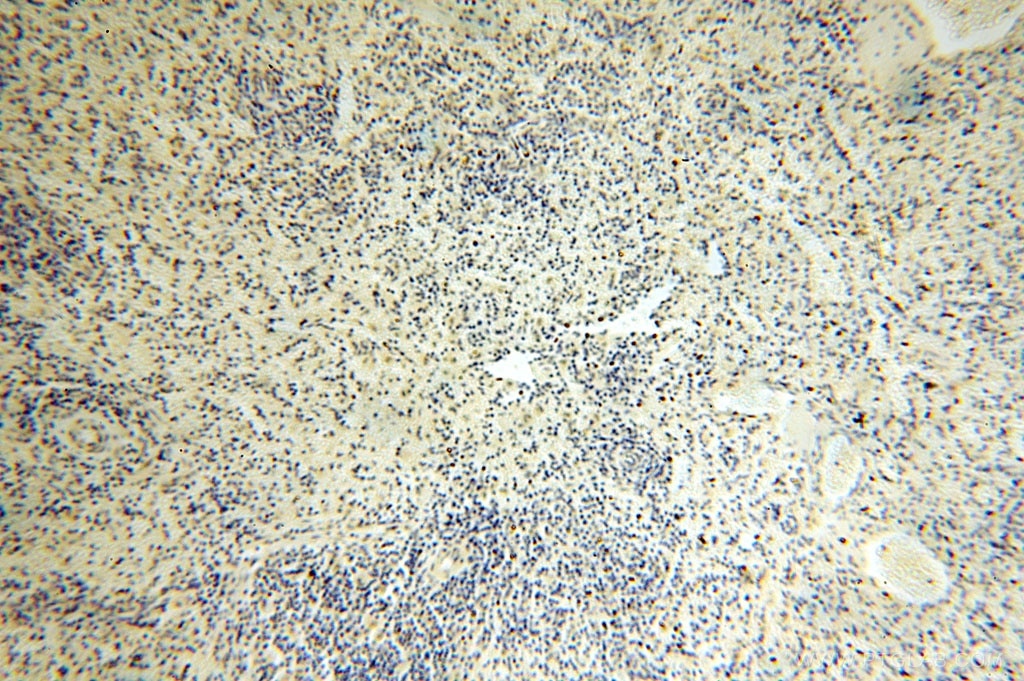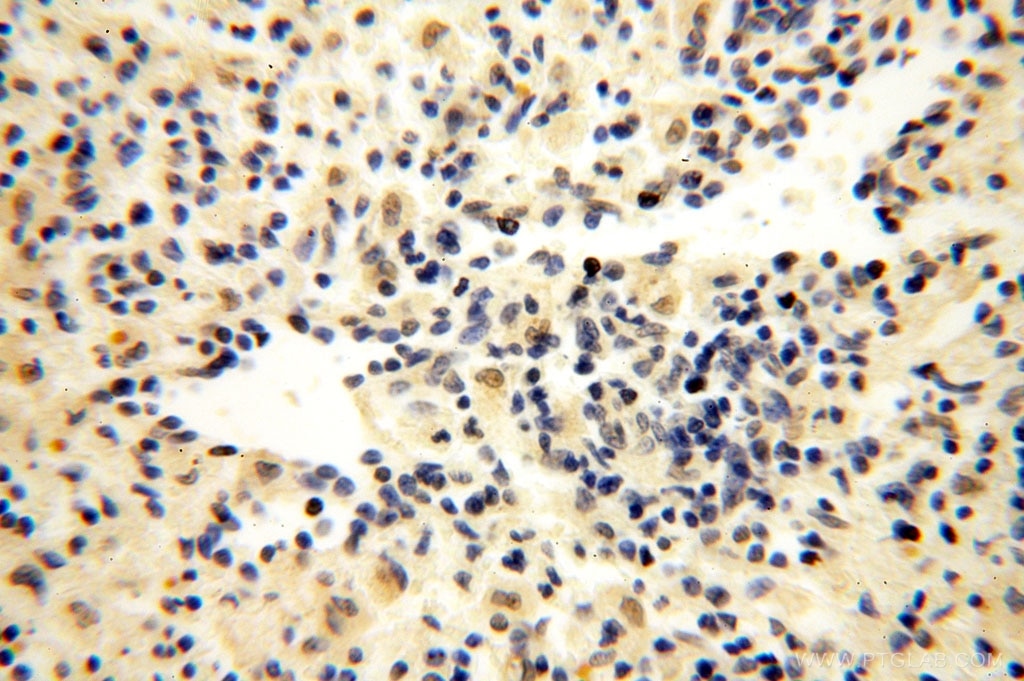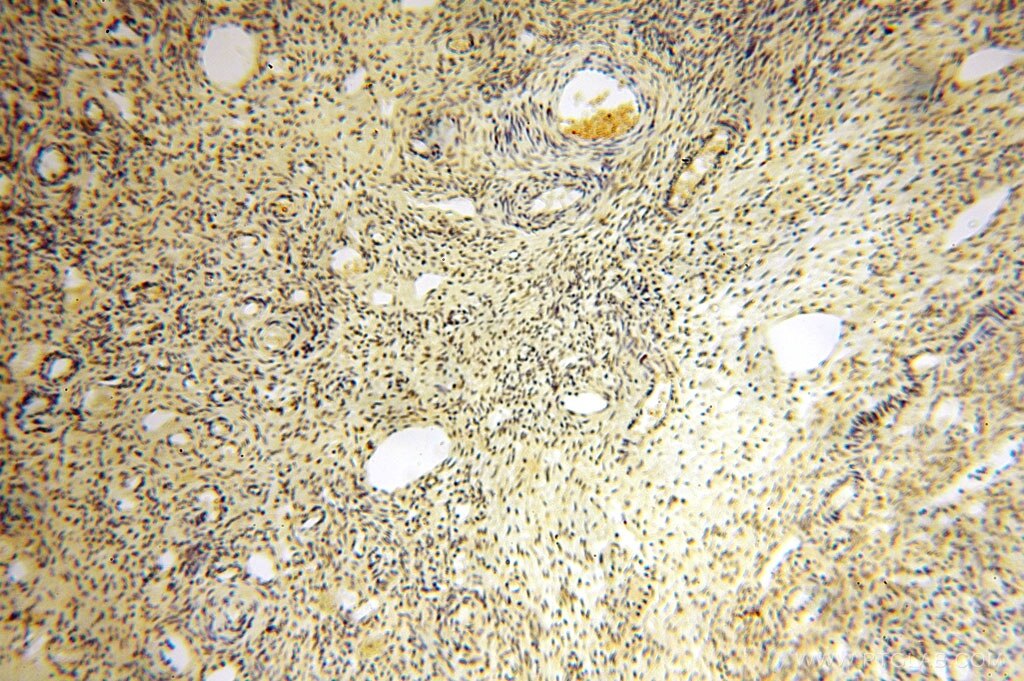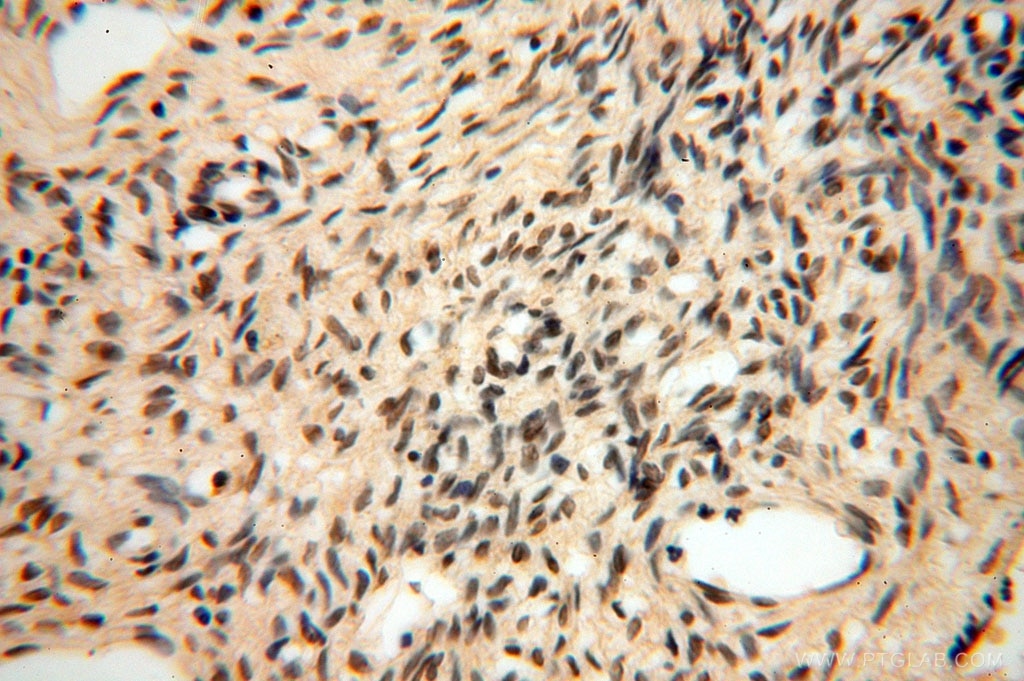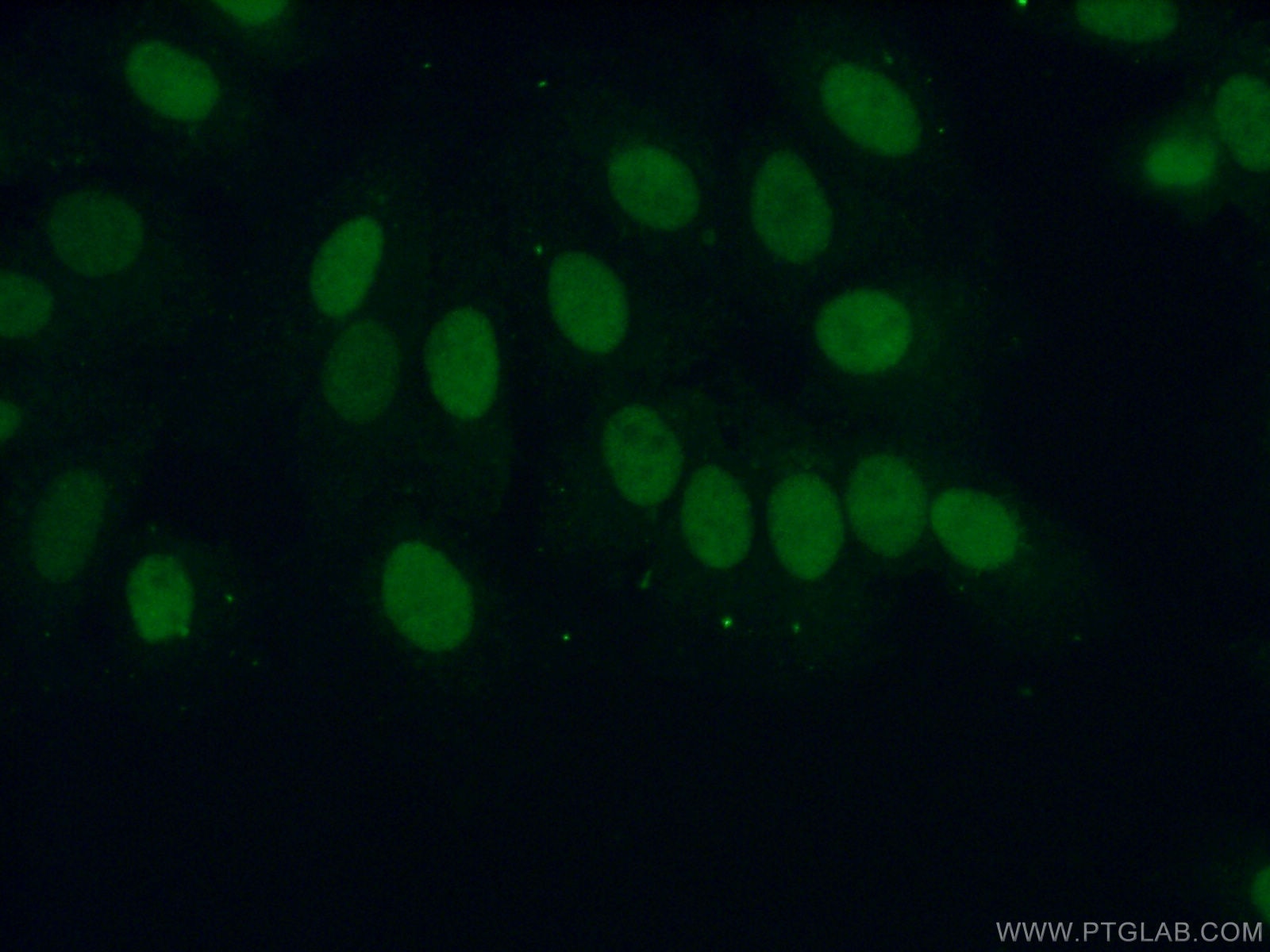- Phare
- Validé par KD/KO
Anticorps Polyclonal de lapin anti-ERCC1
ERCC1 Polyclonal Antibody for WB, IP, IF, IHC, ELISA
Hôte / Isotype
Lapin / IgG
Réactivité testée
Humain, rat, souris
Applications
WB, IHC, IF/ICC, IP, ELISA
Conjugaison
Non conjugué
N° de cat : 14586-1-AP
Synonymes
Galerie de données de validation
Applications testées
| Résultats positifs en WB | cellules HeLa, cellules MCF-7, cellules SKOV-3, cellules T-47D, tissu rénal humain |
| Résultats positifs en IP | cellules MCF-7 |
| Résultats positifs en IHC | tissu testiculaire humain, tissu cérébral humain, tissu cutané humain, tissu ovarien humain, tissu splénique humain il est suggéré de démasquer l'antigène avec un tampon de TE buffer pH 9.0; (*) À défaut, 'le démasquage de l'antigène peut être 'effectué avec un tampon citrate pH 6,0. |
| Résultats positifs en IF/ICC | cellules MCF-7 |
Dilution recommandée
| Application | Dilution |
|---|---|
| Western Blot (WB) | WB : 1:1000-1:5000 |
| Immunoprécipitation (IP) | IP : 0.5-4.0 ug for 1.0-3.0 mg of total protein lysate |
| Immunohistochimie (IHC) | IHC : 1:20-1:200 |
| Immunofluorescence (IF)/ICC | IF/ICC : 1:50-1:500 |
| It is recommended that this reagent should be titrated in each testing system to obtain optimal results. | |
| Sample-dependent, check data in validation data gallery | |
Applications publiées
| KD/KO | See 5 publications below |
| WB | See 16 publications below |
| IHC | See 4 publications below |
Informations sur le produit
14586-1-AP cible ERCC1 dans les applications de WB, IHC, IF/ICC, IP, ELISA et montre une réactivité avec des échantillons Humain, rat, souris
| Réactivité | Humain, rat, souris |
| Réactivité citée | Humain, souris |
| Hôte / Isotype | Lapin / IgG |
| Clonalité | Polyclonal |
| Type | Anticorps |
| Immunogène | ERCC1 Protéine recombinante Ag6112 |
| Nom complet | excision repair cross-complementing rodent repair deficiency, complementation group 1 (includes overlapping antisense sequence) |
| Masse moléculaire calculée | 33 kDa |
| Poids moléculaire observé | 38 kDa |
| Numéro d’acquisition GenBank | BC052813 |
| Symbole du gène | ERCC1 |
| Identification du gène (NCBI) | 2067 |
| Conjugaison | Non conjugué |
| Forme | Liquide |
| Méthode de purification | Purification par affinité contre l'antigène |
| Tampon de stockage | PBS avec azoture de sodium à 0,02 % et glycérol à 50 % pH 7,3 |
| Conditions de stockage | Stocker à -20°C. Stable pendant un an après l'expédition. L'aliquotage n'est pas nécessaire pour le stockage à -20oC Les 20ul contiennent 0,1% de BSA. |
Informations générales
Excision Repair Cross Complementing 1 (ERCC1) is a structure-specific endonuclease that is responsible for the 5'-incision during DNA repair. It forms a complex with ERCC11, XPF and ERCC4, which are required in both recombinatorial repair and nucleotide excision repair. It has been found that ERCC1, together with RRM1, are determinants of survival after surgical treatment of early-stage, non-small-cell lung cancer. (Ref: Simon, ER. 2005). The calculated molecular weight of ERCC1 is 33 kDa, but the modified ERCC1 is about38 kDa.
Protocole
| Product Specific Protocols | |
|---|---|
| WB protocol for ERCC1 antibody 14586-1-AP | Download protocol |
| IHC protocol for ERCC1 antibody 14586-1-AP | Download protocol |
| IF protocol for ERCC1 antibody 14586-1-AP | Download protocol |
| IP protocol for ERCC1 antibody 14586-1-AP | Download protocol |
| Standard Protocols | |
|---|---|
| Click here to view our Standard Protocols |
Publications
| Species | Application | Title |
|---|---|---|
Blood Cancer J Severe ineffective erythropoiesis discriminates prognosis in myelodysplastic syndromes: analysis based on 776 patients from a single centre.
| ||
Cell Death Dis PFKFB3 blockade inhibits hepatocellular carcinoma growth by impairing DNA repair through AKT. | ||
J Cell Mol Med Berberine attenuates XRCC1-mediated base excision repair and sensitizes breast cancer cells to the chemotherapeutic drugs. | ||
Oncotarget Functional characterization of a novel transcript of ERCC1 in chemotherapy resistance of ovarian cancer. | ||
Oncol Res The AKT/GSK3-Mediated Slug Expression Contributes to Oxaliplatin Resistance in Colorectal Cancer via Upregulation of ERCC1.
| ||
Cancer Cell Int Mechanistic study of lncRNA UCA1 promoting growth and cisplatin resistance in lung adenocarcinoma. |
